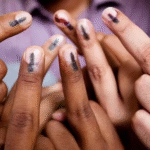In recent years, foreign universities have found their place in the Indian educational landscape, sparking both excitement and debate. As more international institutions set up campuses, offer joint programs, or collaborate with Indian universities, the impact on Indian education is undeniable. But what happens when foreign education meets India’s complex, diverse system? The contrast is stark—global standards clash with local realities. Let’s dive into the fascinating shift foreign universities are creating in Indian education.
1. Global Standards vs. Local Needs: The Great Disconnect
Foreign universities bring world-class education to India. But here’s the thing: what works globally doesn’t always align with India’s diverse educational demands. While students get access to global curriculums, the real test lies in adapting them to the local context.
- Curriculum Superiority: Foreign degrees are often designed with a global market in mind—cutting-edge, industry-focused, and research-driven. However, the question is, can this curriculum address India’s unique challenges like rural development or socio-economic disparities?
- Industry Relevance: While foreign institutions focus on global trends, such as sustainable business practices, the application of these trends to India’s evolving economy often feels out of place. Can global practices work in a market still dominated by traditional business models?
Real Insight:
Take IIM Ahmedabad’s collaboration with the University of Chicago—the integration of international business concepts is helpful, but does it provide the depth of understanding required to tackle issues like rural finance or India’s informal sector? It’s a learning curve that requires more than just textbook knowledge.
2. Degrees That Open Global Doors, But Stumble at Home
Degrees from international universities are like golden tickets to a world of opportunities. But what happens when these degrees, which shine abroad, face scrutiny back home? This is where the contrast lies.
- Global Recognition: A degree from Harvard or Stanford opens doors in global job markets, but in India, the story isn’t always so simple. Foreign degrees are often seen as prestigious, yet navigating regulatory bodies like UGC or AICTE for recognition can be tricky.
- Mismatch of Expectations: India’s complex regulatory framework often makes the recognition of foreign degrees a slow process. While international degrees bring immense value in global markets, they might not always be recognized or valued at the same level within India’s domestic corporate landscape.
Real Insight:
When foreign institutions set up campuses in India, the regulatory process becomes a roadblock. While The University of Chicago’s partnership with IIM Ahmedabad offers a globally recognized qualification, Indian regulatory approval has been slow to catch up, making the path to operational success longer than expected.
3. Cutting-Edge Research vs. Practical Implementation in India
Foreign universities often lead the charge in innovation and research, pushing the boundaries of knowledge in areas like AI, sustainability, and business strategy. But when their research meets the ground realities of India, the translation can be challenging.
- Innovation at Its Core: Foreign universities provide unparalleled research resources. But the real challenge lies in applying these innovations within the Indian context, where infrastructure, funding, and market demands may differ.
- Tech Solutions in Rural India: While AI-driven solutions may thrive in Silicon Valley, India’s rural markets face completely different challenges—like low access to technology or a lack of digital infrastructure. The stark contrast here is the gap between high-tech solutions and low-resource environments.
Real Insight:
IITs collaborate with international universities like MIT and Stanford on groundbreaking research, but the application of these innovations in rural India often faces significant hurdles. A research paper on smart farming in the US may look promising, but without infrastructure, it might not work in India’s remote villages.
4. Cultural Exchange vs. Cultural Disconnect
The arrival of foreign universities in India promises a unique exchange of ideas and cultures. But let’s face it—sometimes, the mix isn’t seamless. While international exposure is beneficial, Indian students and educators still grapple with deeply ingrained cultural and societal norms.
- Teaching Styles: Foreign universities bring new pedagogies, focusing on student-led learning, case studies, and critical analysis. These methods often collide with the traditional rote learning system prevalent in many Indian classrooms.
- Corporate Culture Clash: The corporate world in India operates quite differently from Western markets, where hierarchy is often less rigid, and open communication is encouraged. Bringing in foreign business practices without considering India’s work culture can lead to misalignment.
Real Insight:
While INSEAD and Wharton alumni from ISB Hyderabad benefit from global perspectives, the actual classroom experience sometimes needs to blend these new ideas with India’s traditional educational systems. The real question is—how do we harmonize these contrasting styles for maximum impact?
5. Affordability: High Costs vs. Accessibility
Foreign degrees are often equated with exclusivity and quality, but the cost can be a significant barrier for many Indian students. While studying at international institutions offers prestige, the financial burden can be overwhelming, especially when it comes to programs that offer foreign degrees within India.
- Cost of Education: Foreign institutions, even those offering degrees in India, come with steep price tags. While these degrees open doors internationally, the question remains—how accessible are they for the average Indian student?
- Affordable Alternatives: Indian universities like IITs and IIMs offer comparable education at a fraction of the cost, forcing students to weigh the pros and cons of paying for an international degree versus receiving a world-class education locally.
Real Insight:
The collaboration between Amity University and University of Northampton brings globally recognized degrees to Indian students at a lower cost than studying abroad. But for many, even this price tag remains a hurdle. Indian students often face a dilemma between prestige and practicality when it comes to their education.
6. Research Excellence vs. Lack of Infrastructure for Implementation
Foreign universities offer the latest research and innovation in diverse fields like AI, fintech, and business strategy. However, the challenge remains in transferring this research into practical, usable solutions for India’s unique challenges.
- State-of-the-Art Research: While foreign universities lead in areas like biotechnology or sustainable energy, implementing these ideas in India’s underdeveloped regions remains difficult due to a lack of necessary infrastructure.
- Sustainability Challenges: Many of the ideas presented in foreign research fail to be applicable in India’s context, where resource scarcity, environmental constraints, and societal needs differ dramatically from the West.
Real Insight:
The integration of foreign research into local ecosystems can face significant barriers. IIM Lucknow, for instance, regularly collaborates with foreign institutions for sustainable development research. However, translating those research papers into action often requires more than just academic collaboration—it needs practical, contextual adjustments.
Conclusion: The Global-Local Tension
The increasing influence of foreign universities in India brings undeniable benefits—world-class education, global exposure, and cutting-edge research. But it’s not without its challenges. The contrast between global standards and local needs is stark, and the gap can sometimes hinder the smooth integration of foreign education systems into the Indian context.
India’s education system has always been rooted in its unique social, economic, and cultural fabric. While foreign universities bring exciting opportunities, the real challenge lies in balancing global trends with the local realities of accessibility, affordability, and practical application. As India continues to grow into a global educational hub, the key will be to bridge these contrasts effectively, integrating the best of both worlds without losing sight of its roots.








